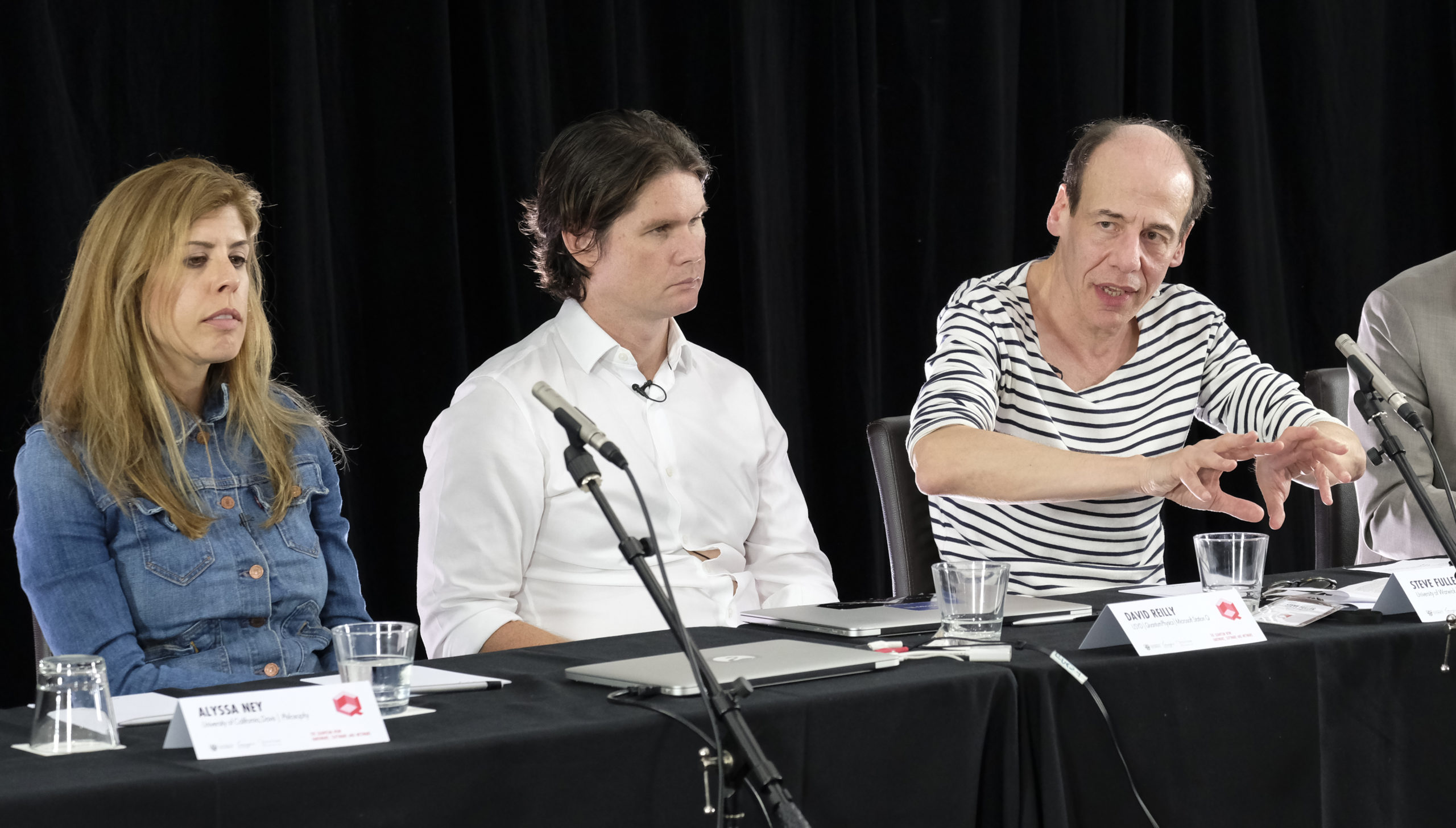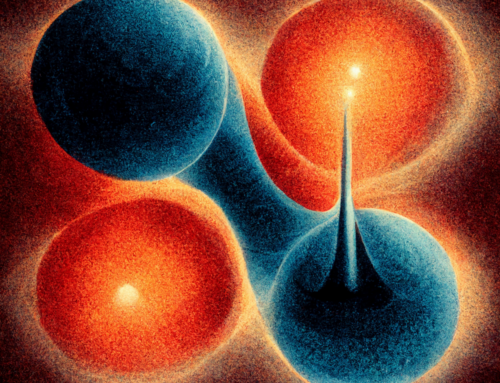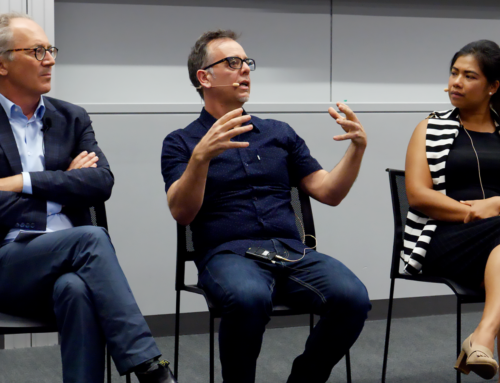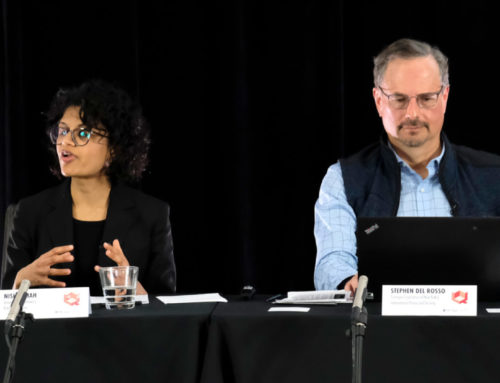Susannah Lai & Alex Vipond
Moderated by James Der Derian and featuring David Reilly (USYD/ Quantum Nanoscience Lab), Alyssa Ney (University of California, Davis) and Steve Fuller (University of Warwick).
David Reilly
Professor David Reilly commenced with a reminder of why scientists get into science in the first place – the wonder inspired by natural phenomena; in his case, the ability of sound waves to affect solid objects through resonance, like an opera singer’s voice shattering a wine glass.
It is duality, Reilly says, that drives quantum technology now – taking advantage of the wave-like nature of matter at the quantum scale. Indeed, superposition, one of the more notorious aspects of quantum science, is a description of matter, particles, behaving in a wave-like function. However, quantum offers more than that; the possibilities of entanglement go beyond anything in classical physics. While entanglement is most often associated with the possibilities of secure-line communications, it also allows for scalable quantum computing, including noise tolerance and error correction.
He went on to enumerate the various areas that advances in quantum computing could revolutionize, from the already much discussed materials science, via quantum modelling of compounds, to providing solutions to the energy crisis via figuring out carbon capture. Reilly also cautioned that we are not yet at the stage of having a ‘quantum transistor’ and are still trying to invent new kinds of qubits.
Alyssa Ney
One of the major cross-disciplinary quantum research streams is the understanding of quantum wave functions through the lens of philosophy, realism. This is the main focus of Professor Alyssa Ney’s work. According to Ney, wave function realism is a framework for understanding the world according to quantum theories; taking quantum theories and applying them to the rest of the universe as a sort of ‘field’ that means the wave function descriptions used in quantum science are a direct description of what underlies observable reality.
While questions of the exact metaphysical nature of a waveform, or what is happening in the box to Schrodinger’s cat might seem somewhat abstract, there are appreciable real-world benefits to the consideration of wave function realism according to Ney. If this understanding of wave-forms on the quantum scale is correct, it could allow for an easier understanding of the particular properties of quantum entanglement and the forces that have a hand in its occurrence.
Quantum entanglement is central to many of the promising quantum technologies being generated, both in communication devices and in quantum computers, but it is also complex and mysterious. Anything that will promote our understanding of it and how to affect it will be valuable.
Steve Fuller
The key idea of this talk was how quantum theories and ideas could transfer from quantum mechanics to the social sciences. Fuller proposed the concept that social scientists can study the general impacts of quantum mechanics or that they can look at quantum theories as a model for how the social sciences should proceed. He began by elucidating the fluidity of ideas between the natural sciences and the social sciences over the centuries. He used the example of theories of bee hive behaviour being imported and exported cyclically through biology and political economy.
Fuller discussed appropriating quantum theory for use in the social sciences, particularly wave particle duality. He highlighted the work of Alexander Wendt as an attempt to incorporate quantum theory as a mode of thinking in the social sciences.
Whilst one to one transference of wave-particle theory is not possible, Fuller believes utility can be drawn from quantum theory.
This premise was challenged by Biercuk, Bruza and Ney who contended that the use of quantum theory in this way is not an application of quantum mechanics. Biercuk noted that the idea of wave functions modelling social phenomena was not quantum mechanics and relied on probability theory which may be more applicable to Fuller’s examples of events like elections and public polling. Ney contested the notion of determinate and indeterminate social states mirroring quantum states and the pre-condition of collapse given waves are constantly collapsing and reforming at the sub-atomic level. Bruza suggested that model transference should rely on provable phenomena such as humans’ violation of the laws of probability in decision making which results in scientists testing other theories in the search for solutions.







Leave a Reply